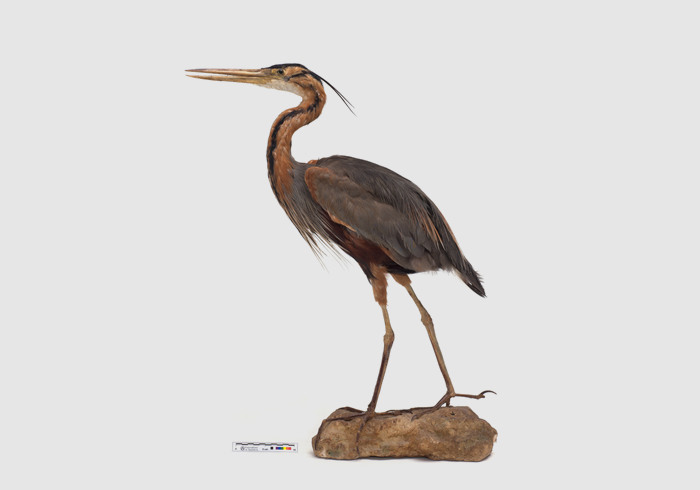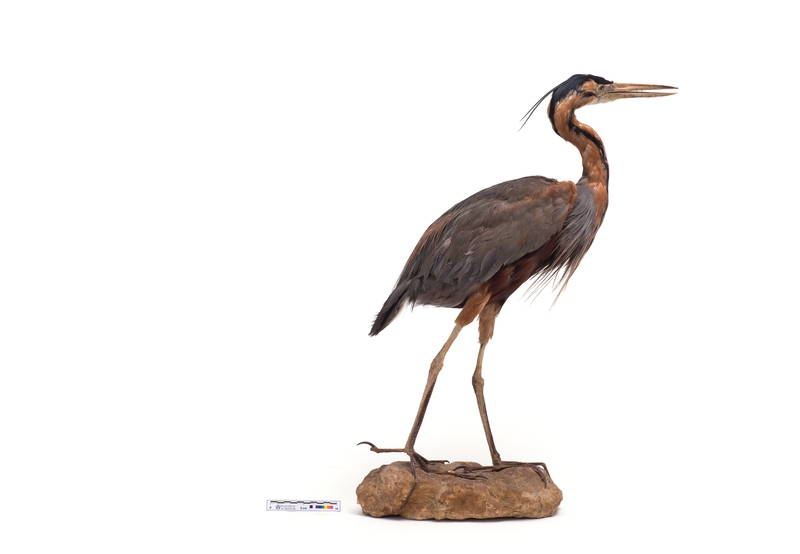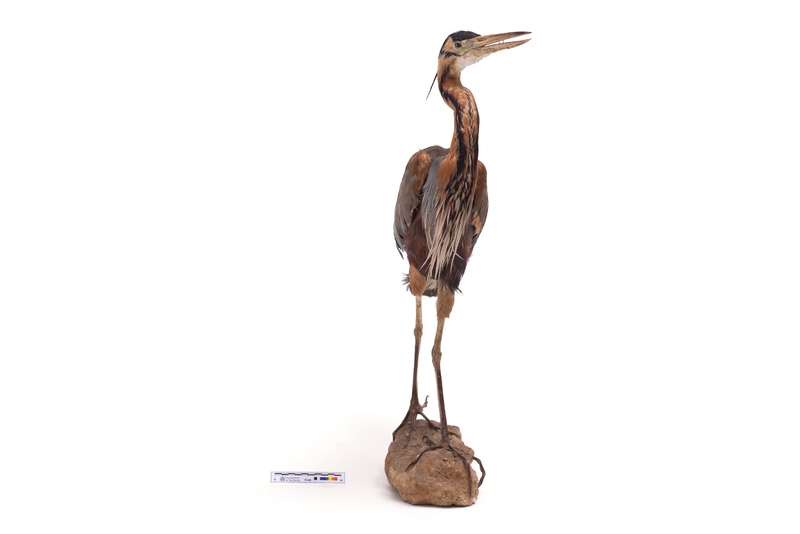Purple heron (Ardea purpurea). VER0000066. Historical collection of taxidermied birds of the University of Valencia.

Purple heron (Ardea purpurea Linnaeus, 1766) is one of the most beautiful ardeidae that we can find in the peninsular territory, The specimen present here is shown with the prenuptial plumage, where we can see long and filamentous feathers on the head, chest and back, prepared by Rafael Curats in 1934. Both in apperance and motility in flight, it is very similar to its sister species the gray heron (Ardea cinerea Linnaeus, 1766), the species in question being slightly smaller in size and more reddish-brown in color compared to the grayer tones presented in the gray heron. The purple heron has a long and thin neck like the rest of the ardeidae, however the apperance and coloration reminds ever more to morphology and movement of a snake. Stylish and graceful silhouette, this aquatic bird it’s easy to see along the summer months in the wetlands with shallow waters and dense vegetation, hoping to capture some prey.
On Iberian Peninsula can be contemplated this species, usually arriving from March to April and leaving this territory on August, starting the migration to return to the south later in October. In winter, just a few specimens stay in Iberian Peninsula and don’t move to Africa, mostly sub-saharan Africa, being reduced to the river basins of Guadalquivir, Tajo and Segura, though during the breeding season the Albufera (Valencia) take in a great population.
Actually we can find this species in the IUCN Red List as “Least Concern”, so in the Red Book of Birds from Spain. However, we can find it as “Special interest” in the National Catalogue of Threatened Species because their population seem to be decreasing slowly but continuously, mainly due to the lost of the wetlands that the herons frequent.
Images:





















